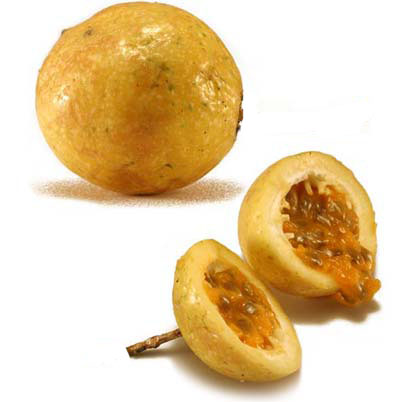All about passion fruit
Description, nutritional benefits and cosmetic virtues of the passion fruit

The passion fruit or Chinola like it’s named here, comes from Spain and Kenya, it is as big as a tennis ball, its skin can be pink, purple or yellow-green according to its variety (those from the Dominican Republic are generally the yellow ones).
It contains many little dark seeds, hedged in their tegument. The pulp is very mucilaginous, light-yellow or orange.
Originally from passion-flower, it’s a climbing plant that we can find in the tropical regions, like west Indies, Africa, Australia, and of course, Dominican Republic.
Like the other fruits, exotics or not, it’s composed in a great part by water, what makes it a very refreshing fruit.
Very perfumed, with a flavor both sweet and acid, it can be eaten natural or in coulis and sorbets, and it’s a real delight.
It contains a moderate amount of Carbohydrates, but doesn’t offer many proteins and fats, what makes its amount of calories lows.
From its vitamins, we can note above all pro-vitamin A and C vitamin, both have antioxidant actions.
And from its minerals, the most presents are potassium, phosphor, and magnesium.
Besides, it provides fibers (more than 7g for 100g), well tolerated despites its crunchy little seeds in its pulp.
The flowers and leaves of the passion fruit could be anti-spasmodic and relaxing, and its seeds, could be useful to eliminate worms.
It’s a digest fruit and helps to fight edginess…
However, in the Dominican Republic they say it’s inadvisable for men since it drops blood pressure !